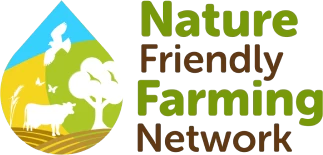
Integrated Pest Management in practice: John Taylor, Pollybell Farms

Farm name |
Pollybell Farms |
Type |
Lowland, mixed, organic |
Size |
2,000 Ha |
Crops |
Cereals, Vegetables, Cover Crops, Rotational Grass |
Livestock |
Sheep |
Soil |
Variable – Peat, Sand |
We're predominantly an organic farm growing cereals, brassica vegetables, leeks, and cover crops. We also have rotational grass/clover lands as fertility builders in the rotation. We utilise sheep in the rotation to graze the rotational grass, cover crops and brassica crop residue.
Crop Planning
We work with our retail customers to establish their requirements and understand the specifications for the brassicas and leeks. We need to plan well in advance to ensure we have sequential plantings to reach the correct harvest window and mitigate oversupply or crop wastage.
Rotation
The farm rotation varies depending on field and soil suitability. Some parts of the farm are not fertile enough for vegetables, so we have more grass clovers and cereals. We utilise cover crops to ensure we have green cover through the winter, which protects the peat soil against wind erosion and increases organic matter.
Variety and Breed Selection
When selecting varieties for cereals, we prefer those with straw strength and strong disease resistance. We are growing predominantly feed wheat and will select the best crops for home-saved seed to sow the following year. When buying in-store lambs onto the farm to graze over the winter, we have good relationships with some producers that are not affected by scab as our ability to control scab organically is very limited, and we need to mitigate the need for treatment. Due to being a lowland farm, we aim to fatten sheep over winter and supply lamb later in the season and into the early spring. For this period, we look for slower-growing breeds such as the Scottish Black Faces.
Intercropping
Across the farm, we have networks of field margins sown with wild bird seed mixes, pollen and nectar and some tussocky grass and these act as interconnecting corridors to the river and small woodlands. These field margins often run alongside hedgerows to give a juxtaposition of habitats for the diverse flora and fauna. Where we have larger fields, we have created beetle banks through the middle of the field, and they are established with tussocky grass. These beetle banks are another way of creating wildlife corridors and encouraging the movement and spread of diverse wildlife.
Soil and Nutrition
We take regular soil samples and monitor for all major and minor nutrients. This helps us ensure crops receive the correct nutrients during establishment to ensure they are vigorous and healthy, enabling them to out-compete some weeds. We will then monitor the nutrition of the growing crop through tissue analysis and be mindful of periods of rapid growth and the effect of heavy rainfall. If additional nutrition is required, we look to apply it through foliar feeds or soil-incorporated fertilisers dependent on crop and time through the growing cycle. We use a combination of green covers, fertility-building grass clover mixes, grazing sheep, composted farm yard manure and organically approved solid and liquid feeds. We try to limit the amount of nutrition required to be bought-in off-farm through careful rotation planning and varietal selection.
Support and Monitoring
Prior to giving the sheep a wormer, we will do a faecal egg count (FEC) and, in some cases, get samples checked by the vet to ensure we are using the correct product. We rotationally graze the sheep across the farm, ensuring we have sufficient breaks on the longer-term leys to prevent worm population build-up.
We also use a selection of sticky and pheromone traps in our vegetable crops to assess thresholds for specific pests and target the applications of organically approved products if appropriate. Some great resources are available for pest and disease prediction models specific to horticulture, which we use to inform many of our agronomic decisions.
Cultural Controls
Due to using cover crops and fertility building leys in the rotation, we have to be mindful of the effect a green bridge can have between one crop and another. Therefore, we aim to graze these down and incorporate them before establishment. We have minimised the number of deep cultivations in some parts of the rotation by not ploughing and power-harrowing but lighter cultivations to create a stale seed bed. Rolling to conserve moisture soon after drilling also has huge benefits to conserving moisture and increasing soil-to-seed contact in our peat soils.
Where we anticipate high pest pressure on the high-value vegetable crops, we use fine mesh crop covers to prevent them from aphid, caterpillar and bird damage.
Biological Controls
We have trailed the introduction of beneficial insects into field margins, but it is difficult to assess their effectiveness, so we have concentrated our efforts in recent years on encouraging naturally occurring predators into field margins and hedgerows across the farm. The next step will be how best to provide them more habitat throughout fields to encourage them to spread.
Chemical Control
We cannot use herbicides across our organic cropping and rely on mechanical weed control and diverse rotations. Disease pressure can be limited through variety selection and utilising inter-row weeding to increase airflow around the plants. Where pest and disease thresholds are exceeded, there may be a requirement to use organically approved products, but we take the steps mentioned above to try and mitigate against the need for feels. Due to the nature of the chemistry available and the window of opportunity to apply them, their efficacy can be debatable.
Learn more about Integrated Pest Management
Download our practical guide
